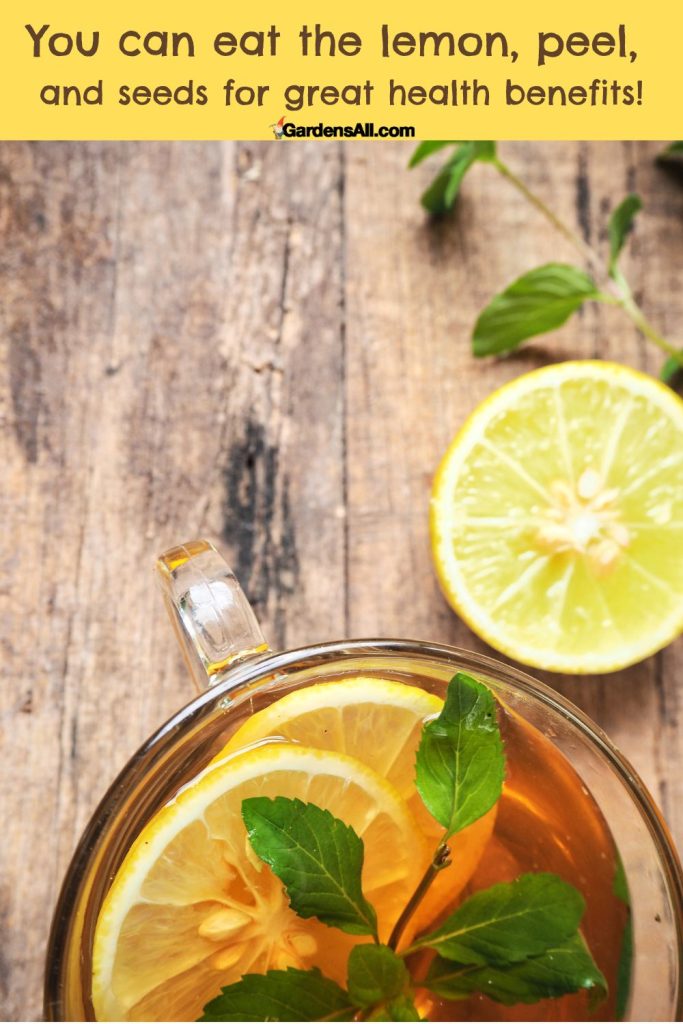If you use a lot of lemons, whether it’s lemonade in summer, or daily lemon water like we enjoy, you’re probably wondering how to use lemon peels for other things besides compost.
That’s what we wanted to know so we embarked on a journey of discovering so many more ways to use lemon peels. From healing benefits of lemon peels to homemade citrus cleaner, to some of the more familiar uses in cooking, we’ve got you covered here.
If you have other ideas that we haven’t covered in this article, we’d appreciate hearing your tip/s so that we can add it to our list in order for others discover and enjoy.
You can find lots of information on the many proven benefits of lemon peel, here.
And once you finish reading all the many ways to put this [typically] refuse to good use for you, you’ll may even want to grow some of your own. We love growing and enjoy Meyer lemons.
Ways to Use Lemon Peels
- Baking: Lemon peels can be added to baked goods such as cookies, cakes, and breads. They add a delicious flavor and a touch of sweetness.
- Candied: You can boil lemon peels in sugar syrup to can create a sweet and tangy treat that can be enjoyed on its own or used to decorate desserts.
- Cleaning: Lemon peels can be used as a natural cleaning agent due to their antimicrobial properties. Rubbing lemon peels on surfaces or mixing them with vinegar or baking soda can create an effective and chemical-free cleaning solution. See our easy DIY citrus cleaner here.
- Extract: You can make lemon extract using the zest of lemon peels.
- Health: The benefits of lemon peels for human health is extensive as we have covered in our article linked here.
- Marinades. Lemon peels can be used in marinades to add flavor and acidity to meat and poultry.
- Powder: Drying and grinding lemon peels into a powder can create a versatile seasoning that can be used in a variety of dishes.
- Preservative: Due to the antibacterial and antimicrobial properties, of lemon peel essential oil.[1]https://www.ncbi.nlm.nih.gov/pmc/articles/PMC10001058/
- Raw: Eat them whole. Lemon peels are edible and can be eaten whole. They have a slightly bitter taste, but they are a good source of nutrients.
- Tea: You can steep fresh or dried lemon peels in hot water to make a soothing and fragrant tea or tea blend. Best for water temperature not to exceed 120°F in order to preserve the most vitamin content.
- Water: Adding lemon peels to make infused water can give it a refreshing and citrusy flavor while providing potential health benefits. For maximum benefit, add to water several hours to overnight for a stronger infusion of beneficial compounds.
- Zest: Lemon zest is the grated outer layer of the lemon peel, and it can be used to add flavor to recipes such as salads, marinades, dressings, and baked goods.
If you enjoy lemon flavors and herbal benefits, you may be interested in this article on uses for lemon balm, or our article on how to make grapefruit seed extract.


I’m LeAura Alderson, a garden, herb and plant enthusiast with a passion for discovering the many edible and medicinal benefits of the plants all around us, including the weeds! I’m a writer, editor and media publisher for our family of websites.
While I was certified in fitness and life coaching, I am NOT a health practitioner. However, I’m a lifelong health enthusiast, with a keen interest in healthy, organic foods and making home remedies and the content we share is from our own experience and usage as well as that extracted from scientific research so that you can explore further on your own.
Always seek the advice and guidance of your health practitioners first and foremost.
As a family we’re steadily expanding our gardening, experimentation and knowledge around all things gardening, edible landscaping, fresh organic foods and self sustainability with farming in our future. I also own and manage iCreateDaily.com, a site all about transformation through creation, and the power of positivity, optimism and mindset.
References

